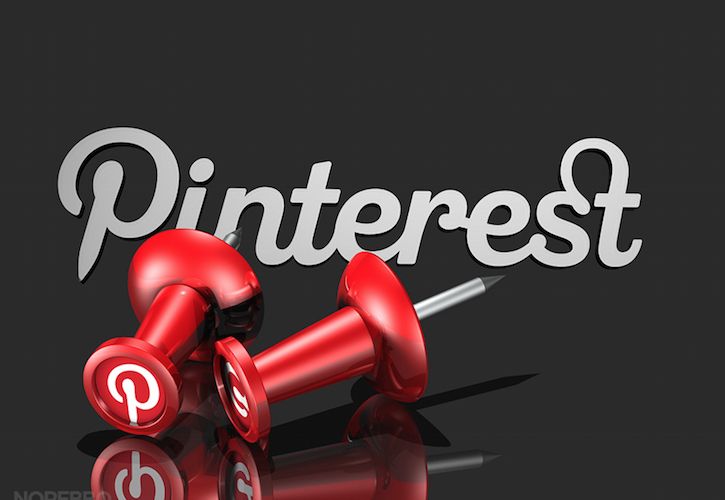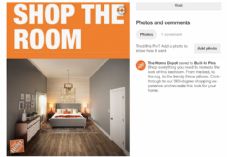Digital Retail News
Revenue challenges for Pinterest

Pinterest hit a major milestone this week, it reached 100 million monthly active users worldwide. But, can the digital scrapbooking platform turn that audience into revenue?
This news comes after a year of rapid growth. According to GlobalWebIndex, Pinterest's active users grew 97% between Q1 2014 and the same period this year. At the same time the social media platform is still under scrutiny as a revenue-generating business especially since investors gave it an $11 billion valuation this year. Pinterest is looking to expand its current 45% international user base, while testing different ways to attract advertising dollars—including fundamentally changing the way marketers view the platform.
Benchmarking against social media peers
One battle Pinterest faces is relatively poor performance in sales conversions as compared to Facebook, Instagram, and Twitter. This might come as something of a surprise because the perception is people are visiting Pinterest with an intention to find something to buy. However, a ChannelAdvisor report on social media sales conversions found a different picture.
Facebook led all platforms by a wide margin at 64% combining U.S. and U.K. results. Twitter came in second at 19% and Instagram third at 9%. Pinterest lagged in fourth at 5%, although it performed better in the U.S. than the U.K. One upside for Pinterest was the likelihood that Facebook’s sheer size influenced the results and Scot Wingo, executive chairman at ChannelAdvisor, said adjusting for traffic data, Facebook and Pinterest convert at similar rates.
Several social networks have experimented with shoppable ads and buttons, Pinterest included. Shoppable features have been largely billed as possible fresh revenue streams. Pinterest rolled out “buyable pins" this summer, although Tim Kendall, Pinterest’s general manager and head of monetization, told Fortune the company has no intention of making money from the feature and instead will double down on advertising for revenue.
Brand engagement is a concern
Another battle facing Pinterest is brands are leaving the platform due to underwhelming engagement. For example, beauty retailer Elizabeth Arden, seemingly a perfect match for Pinterest’s 80% female user base, marketed on the platform for four years posting product images, pictures of models and offering beauty tips.
When Pinterest began offering promoted pins earlier this year, the brand took advantage of the advertising option that charged on a CPM basis. What Elizabeth Arden found was a very low level of engagement averaging only a couple of repins per post – a disappointing return on investment creating and managing the pins. In response Elizabeth Arden pulled out of Pinterest altogether to focus on Instagram.
In a Forrester report, analyst Nate Elliot outlined some of engagement issues Pinterest faces, "Many marketers just can’t seem to find success on Pinterest. Even a marketing behemoth like Coke has only 6,000 followers. One reason for the frustration is that Pinterest has very limited targeting (only a few dozen criteria) for its Promoted Pins. The result of such limit targeting is unclear ad performance."
Social or search?
One of Pinterest’s more interesting initiatives is an effort to completely rebrand its identity, at least as far as marketers are concerned. It’s a pretty safe bet that Pinterest’s entire user base considers it another part of their extended social media network. For marketing purposes, Pinterest is hoping to differentiate itself from its peers and instead be seen as a destination for search marketing dollars.
There’s a very good reason to make a play for search budgets because search still gets the largest portion of digital ad budgets at over 45% of all U.S. digital ad spending in 2014, according to eMarketer. Pinterest's Kendall explained the reasoning behind the industry-level rebranding saying the platform isn’t used to connect with people like other social media forums, but is more of a “catalog of ideas” that users search making it more of a search and discover platform rather than a virtual town square.
Of course in seeking search marketing dollars, Pinterest faces formidable competition – Google controls more than 72% of total search ad spending in the U.S. according to eMarketer estimates.
The challenge is clear; the solution, not so much. That said, in re-focusing on advertising to grow revenue, Pinterest might just be able to deliver on its market valuation.
Source: Retail Dive
Read in full here.
I find the news and articles they publish really useful and enjoy reading their views and commentary on the industry. It's the only source of quality, reliable information on our major customers and it's used regularly by myself and my team.










































